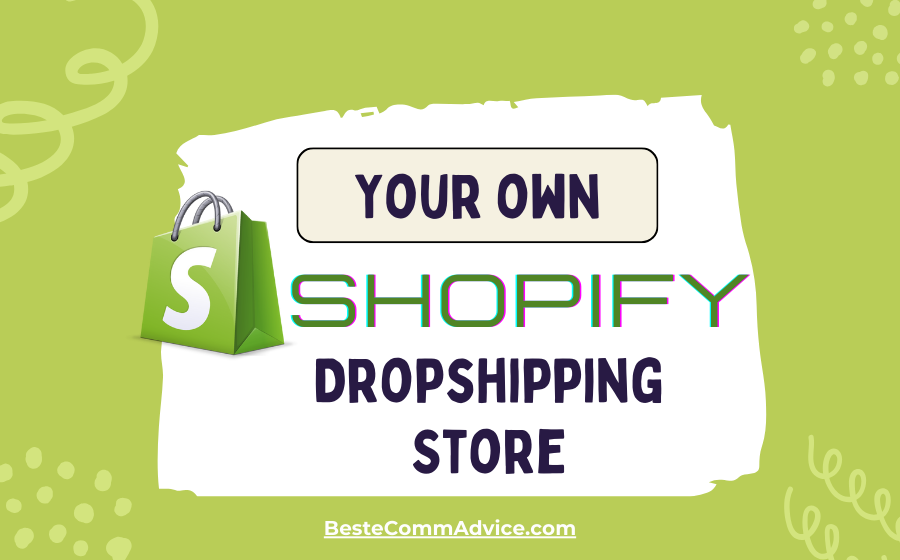
How to dropship on Shopify?
20 March 2024Mastering Dropshipping on Shopify: A Step-by-Step Guide
Dropshipping has emerged as a popular business model for aspiring entrepreneurs looking to start an online store with minimal upfront investment and inventory management. By leveraging platforms like Shopify, you can seamlessly integrate dropshipping into your e-commerce business and unlock a world of opportunities. In this detailed guide, we’ll walk you through the step-by-step process of dropshipping on Shopify, from selecting suppliers to managing orders and scaling your business.
Choose a Niche and Research Products:
a. Identify Your Niche: Begin by identifying a niche market or target audience that aligns with your interests, expertise, and market demand. Conduct market research to identify profitable niches with low competition and high demand.
b. Research Products: Once you’ve chosen a niche, research potential products to dropship. Look for products that are in-demand, have a competitive advantage (unique features, high-quality, etc.), and offer sufficient profit margins.
Find Reliable Suppliers:
a. Research Suppliers: Identify reputable suppliers or wholesalers that offer dropshipping services within your chosen niche. Look for suppliers with a proven track record of reliability, quality products, and fast shipping times.
b. Contact Suppliers: Reach out to potential suppliers to inquire about their dropshipping services, product catalog, pricing, and terms. Ask for samples to evaluate product quality and shipping times before committing to a partnership.
c. Negotiate Terms: Negotiate favorable terms with suppliers, including pricing, minimum order quantities, shipping costs, and return policies. Ensure clear communication and establish a mutually beneficial relationship with your suppliers.
Set Up Your Shopify Store:
a. Sign Up for Shopify: Create a Shopify account and choose a suitable pricing plan based on your business needs and budget. Follow the prompts to set up your store name, domain, and payment gateway.
b. Customize Your Store: Customize your Shopify store by selecting a theme, designing your website layout, and adding branding elements (logo, colors, etc.). Optimize your store for conversions by ensuring a seamless and user-friendly shopping experience.
c. Add Products: Import product listings from your suppliers or manually add products to your Shopify store. Optimize product titles, descriptions, and images for search engines and conversion optimization.
Configure Order Fulfillment:
a. Install Dropshipping Apps: Install dropshipping apps or integrations from the Shopify App Store to streamline order fulfillment and automate processes. Popular dropshipping apps include Oberlo, Spocket, and Printful.
b. Sync Products: Connect your Shopify store with your dropshipping supplier’s platform to sync product inventory, pricing, and availability in real-time. This ensures accurate product information and prevents overselling.
c. Fulfill Orders: When a customer places an order on your Shopify store, fulfill the order through your dropshipping app or supplier’s platform. The supplier will then ship the product directly to the customer on your behalf.
Optimize Your Business Operations:
a. Monitor Performance: Keep track of your store’s performance, sales metrics, and customer feedback using Shopify’s built-in analytics tools. Analyze data to identify trends, optimize product offerings, and improve marketing strategies.
b. Provide Excellent Customer Service: Offer exceptional customer service by promptly responding to inquiries, resolving issues, and providing personalized support. Build trust and loyalty with your customers to encourage repeat purchases and positive reviews.
c. Continuously Improve: Stay updated on industry trends, market dynamics, and customer preferences to adapt and evolve your dropshipping business. Experiment with new products, marketing tactics, and sales channels to stay ahead of the competition.
Scale Your Business:
a. Expand Product Catalog: Diversify your product offerings by adding new products, variations, or complementary items to cater to a wider audience and increase sales opportunities.
b. Optimize Marketing: Invest in marketing strategies to drive traffic and sales to your Shopify store. Explore various marketing channels such as social media advertising, email marketing, influencer partnerships, and search engine optimization (SEO).
c. Automate Processes: Automate repetitive tasks and processes using Shopify apps and integrations to streamline operations and free up time for strategic decision-making and business growth.
By following these steps and implementing best practices, you can build a successful dropshipping business on Shopify and capitalize on the lucrative opportunities in the e-commerce landscape. Remember to stay focused, persistent, and adaptable as you navigate the challenges and rewards of dropshipping entrepreneurship. With Shopify as your platform and strategic partner, the sky’s the limit for your dropshipping success.
.png)